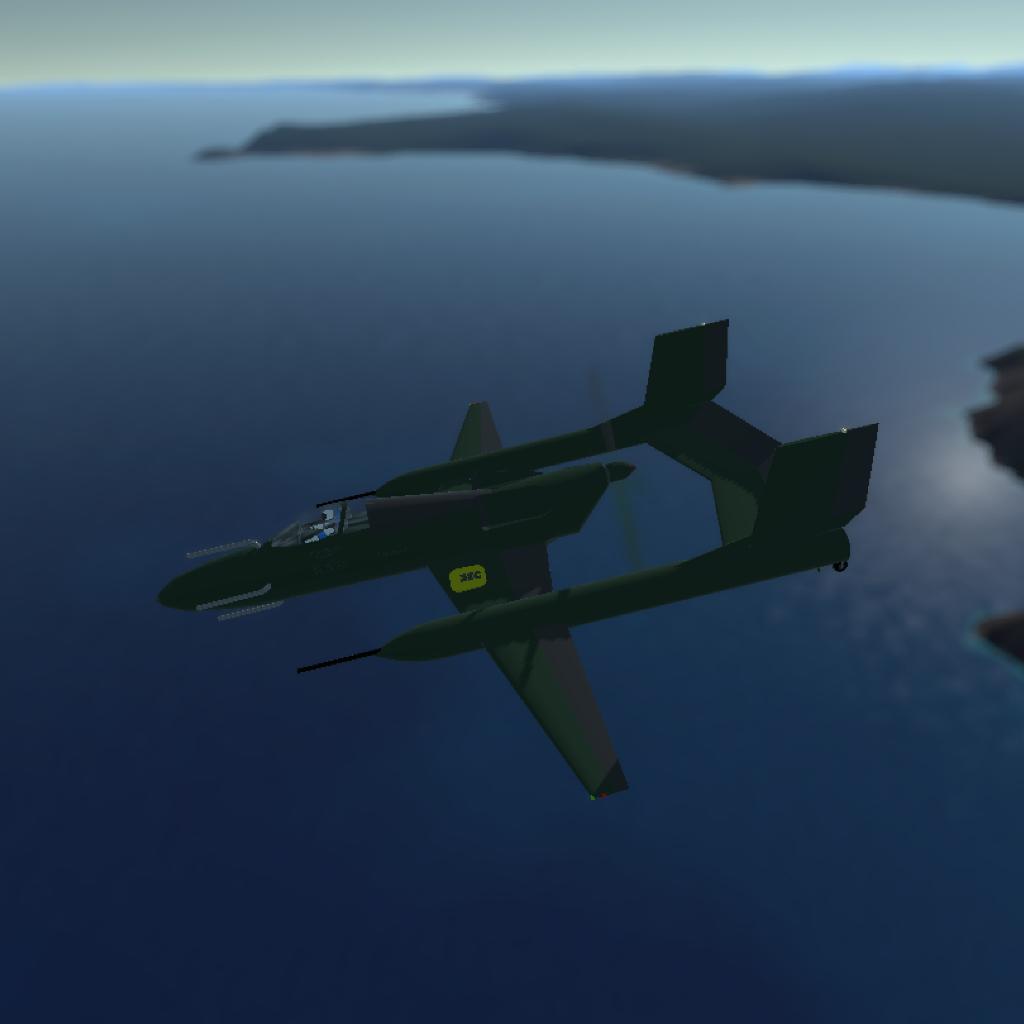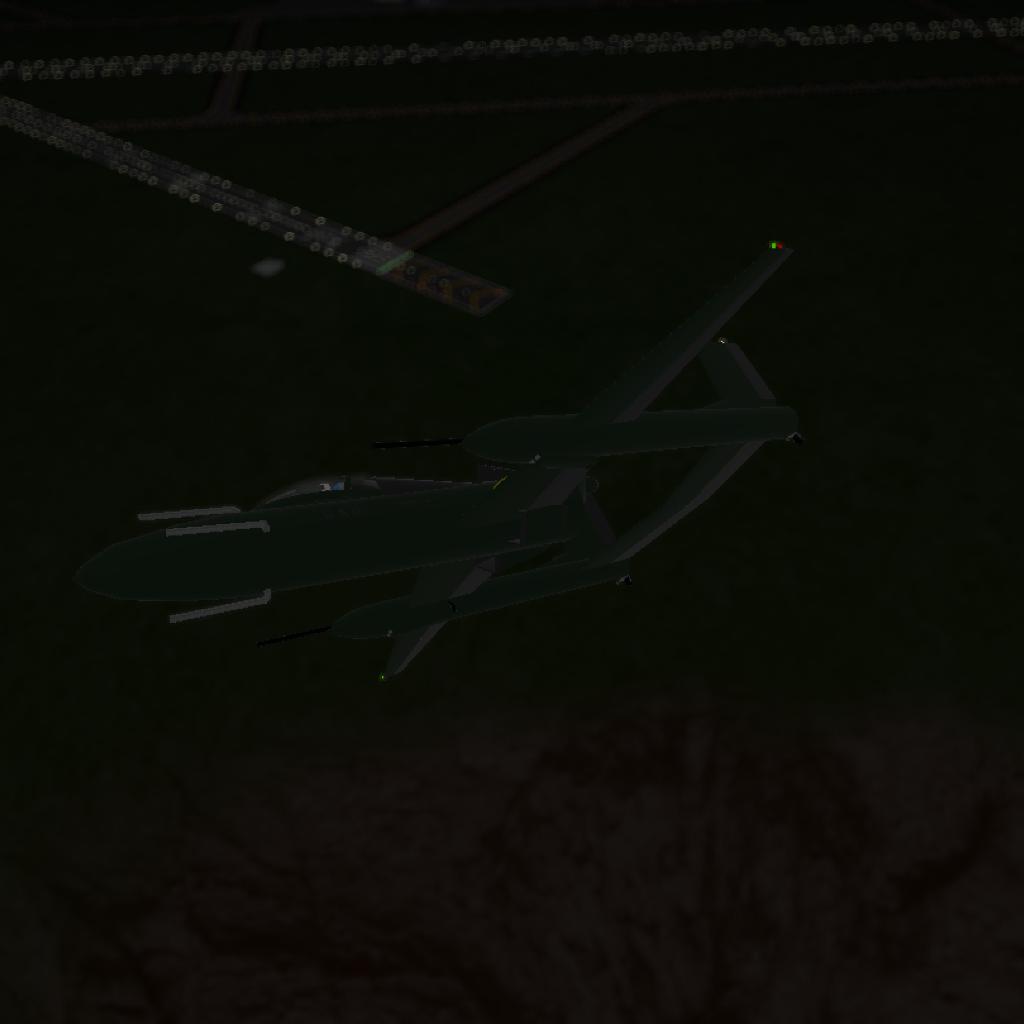Origins of the Ga-7: The Agile and Powerful Night Fighter
Background
The Ga-7 was an earlier model in the Garry Alexander aircraft series, preceding the more famous Ga-8. Developed during the early stages of World War II, the Ga-7 was designed as a night fighter to counter enemy bombers and reconnaissance planes operating under the cover of darkness. The aircraft's distinctive push-prop configuration and agile performance made it a crucial element of the Hiranese Air Defence (H.A.D.).
Design and Development
Garry Alexander, a visionary aircraft designer, recognized the need for a specialized night fighter early in the war. The Ga-7 project began in late 1939, aiming to create an aircraft that could excel in the unique challenges of nocturnal aerial combat.
Key Features:
Push-Prop Configuration: The Ga-7 was notable for its rear-mounted pusher propeller, a design choice that offered several advantages. This configuration reduced noise and vibration in the cockpit, improved the pilot’s forward visibility, and allowed for a more streamlined airframe.
Powerful Engine: The Ga-7 was powered by a Pratt & Whitney R-1830 Twin Wasp radial engine, known for its reliability and power. This engine was mounted at the rear of the fuselage, driving a four-blade propeller that provided the thrust necessary for high-speed interceptions.
Armament: The Ga-7 was equipped with two .50 caliber M2 Browning machine guns mounted on the wings. These guns were synchronized with the aircraft’s radar system, allowing for precise targeting in low-visibility conditions.
Radar System: As a night fighter, the Ga-7 featured an early airborne radar system, which was state-of-the-art technology at the time. This system enabled the aircraft to detect and track enemy planes in the dark, giving it a significant tactical advantage.
Agility and Speed: The Ga-7 was designed with a focus on agility and speed. Its lightweight construction, coupled with its powerful engine, allowed for sharp turns and quick climbs. Remarkably, the Ga-7 could reach speeds close to Mach 1, achieving Mach 0.91, making it one of the fastest aircraft of its time.
Camouflage: The Ga-7 was painted in a very dark green and dark grey color scheme, providing effective camouflage against the night sky and helping it evade detection by enemy forces.
Disadvantages
Despite its innovative design and advantages, the Ga-7 had several notable disadvantages:
Bulk and Weight: The radial engine, while powerful and reliable, was bulky and added significant weight to the aircraft. This made the Ga-7 somewhat heavier than other night fighters of its class, affecting its overall agility and speed to some extent.
Low Ground Clearance: The pusher propeller configuration, while advantageous in many respects, resulted in very low ground clearance. This made the propeller prone to hitting the ground during takeoff and landing, leading to potential damage and increased maintenance requirements.
Deployment and Success
The Ga-7 entered service with the Hiranese Air Defence in early 1941. Its innovative design and advanced radar system made it highly effective in its role as a night fighter, despite its disadvantages.
Operational Highlights:
- Defensive Patrols: The Ga-7 was deployed on nightly patrols to protect key industrial and military installations from enemy bombing raids. Its radar system and agile performance made it particularly effective in this role.
- Interceptions: The Ga-7 successfully intercepted numerous enemy aircraft, reducing the effectiveness of night bombing campaigns and providing much-needed air cover for ground forces.
- Pilot Praise: Pilots praised the Ga-7 for its excellent visibility, smooth handling, and reliable performance, although they did express concerns about the low ground clearance and the occasional difficulty in handling due to its weight.
Legacy
The success of the Ga-7 laid the groundwork for future developments in night fighter technology. Its innovative push-prop design and effective use of radar influenced subsequent aircraft designs, including the more advanced Ga-8.
The Ga-7 remains a significant chapter in the history of military aviation, celebrated for its contributions to the Hiranese Air Defence and its role in securing the night skies during World War II.
Conclusion
The Ga-7 was a pioneering night fighter that showcased Garry Alexander’s ingenuity and foresight. Despite its disadvantages, its powerful performance, advanced technology, and effective deployment by the Hiranese Air Defence ensured its place in aviation history as a formidable and influential aircraft. The Ga-7's remarkable speed, nearing Mach 1, set it apart as one of the fastest and most agile fighters of its era.
5 Comments
- Log in to leave a comment
-
673 Boredplanet1110 months ago
@Avationguy771 maybe i can make a push-pull prop out of the same fuselage making it a supersonic aircraft
-
-
637 Aviationguy77110 months ago
@Boredplanet also i might make the ww2 plane on my profile picture sense its my 1st ever design in another game
-
637 Aviationguy77110 months ago
This is one amazing aircraft with a speed of 310m/s mach 0.91 or nearly mach 1 and its stability and manuverability is just wow








@Boredplanet ok i think that will workout well